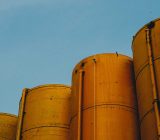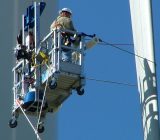Approximately 587,000 Australian workers were exposed to silica dust in the workplace in 2011. It has been estimated that 5758 of these will develop a lung cancer over the course of their life as a result of that exposure.
It’s just one example of occupational dust hazards causing health problems for workers, including those in construction, shingle manufacturing and glass production roles, which employers have a responsibility to address.
This article outlines the steps businesses can take to manage dust exposure in the workplace and create a healthy and hazard-free environment for employees.
Dust is a common air pollutant. Many different sources and activities generate dust, including:
- Demolition of structures, such as buildings, sheds, towers, chimney stacks, silos, and storage tanks.
- Excavating, stockpiling, handling, and transferring materials.
- Drilling and blasting.
- Vehicle movements on unsealed roads and tracks
- Cement handling and batching
- Mining and quarrying
- Glass reprocessing
- Agricultural activities, such as ploughing and soil tilling.
UNDERSTANDING THE RISKS
Workplace dust is unavoidable in many occupations, but in high concentrations it can go from being an irritant to a real health risk. Mineral dust such as silica, organic dust like wood and flour, and mineral fibres like asbestos all are commonly found in workplaces and can be dangerous when inhaled in high concentrations.
When you use a structured way to eliminate or reduce the risks of harm dust poses, it helps you:
- Prevent harm to human health and the environment
- Comply with your environmental duties and obligations
- Meet community expectations.
Failure to eliminate or reduce these risks could mean you face:
- Clean-up costs
- Lost work time
- Legal fees
HOW DUST IMPACTS OUR ENVIRONMENT
It’s not enough for employers to just recognize the dangers their work presents to employees. Actions must be taken to create a clear safety policy and actively remove the risks.When businesses and industries don’t manage dust, it can impact the environment in the following ways:
- Damage to parks and outdoor recreation sites, impacting use and enjoyment.
- Damage to plants and ecosystems.
- Reduced visibility onsite and in nearby areas, Which can lead to other hazards.
- Poor water quality, and death of aquatic animals and plants due to waterway sedimentation.
HOW TO MANAGE THE RISK FROM DUST
For many workers, completely avoiding dust isn’t an option. However, all businesses can take steps to minimize the risk of harm to employees. For example, employers are required by law to provide employees with personal protective equipment (PPE) relevant to their given workplace hazards.For those in environments with high concentrations of fine dust particles, standard PPE should include gloves, barrier creams and other skin protection like long-sleeved clothing to avoid irritation. It’s also important to protect employees’ eyes with goggles and visors and provide face coverings and masks to protect the respiratory system.
The controls you put in place will depend on:
- The activities being done
- The nature of the dust.
- Preventing dust is the best approach to reducing risk.
You should alsominimise dust. For example, use wind barriers and dust suppression measures.For example, use dust extractors and dust screens.
General dust and dirt can be reduced on site by complying with the following guidelines:
➔ Replacement or substitution should always be considered first i.e., toxic for non-toxic materials
➔ Suppression by using a wet process as opposed to a dry process may be sufficient to reduce the dust hazard
➔ Local Exhaust Ventilation (LEV) plant should be considered good housekeeping and site planning will help in general to reduce dust and dirt created on-site
➔ Store dusty materials in an enclosed area, reducing the potential of wind erosion
➔ Ensure that all dust collecting equipment is properly maintained and is operated efficiently
➔ Ensure that all vehicles are sheeted when transporting fine or contaminated materials




